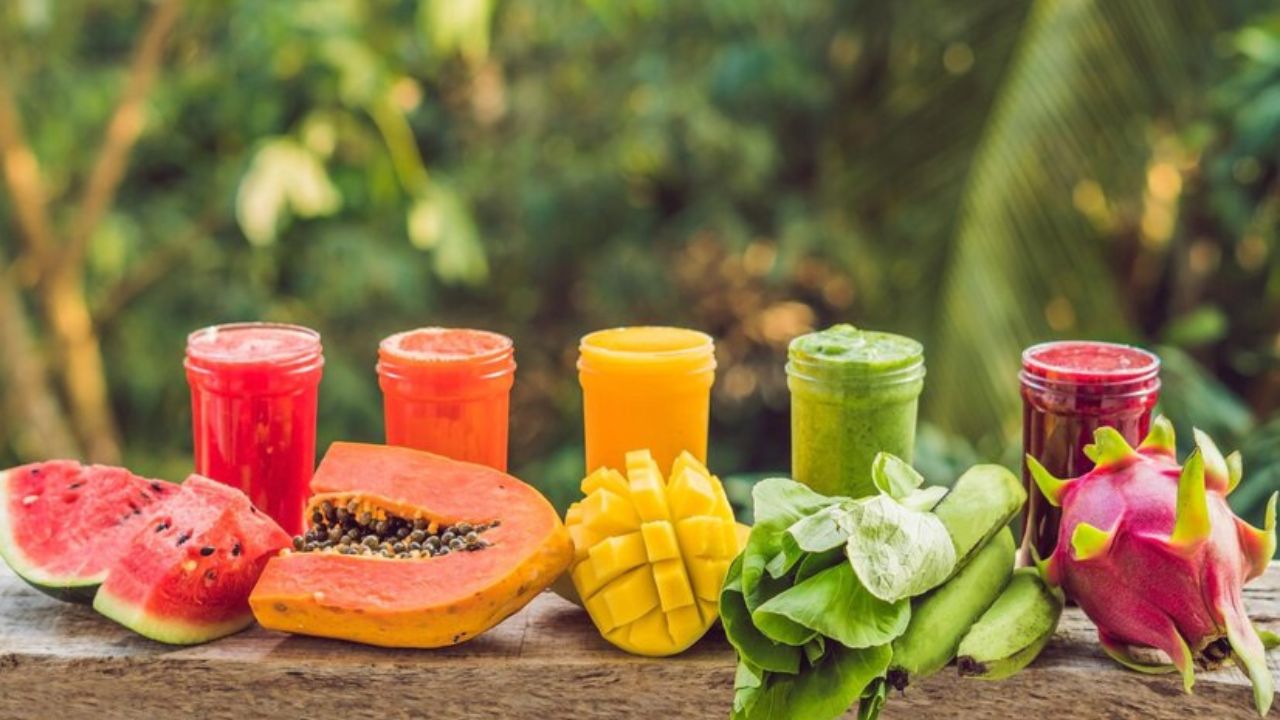BLOG
Jeanne Córdova: The Fierce Voice Behind LGBTQ

Jeanne Córdova was a pioneering force in the LGBTQ community. Her work as a writer, activist, and organizer has left an indelible mark on the fight for equality. But who was Jeanne Córdova, and why does her legacy matter today? This blog post explores the life and accomplishments of Jeanne Córdova, her influence on the LGBTQ movement, and the lessons we can learn from her fearless leadership.
The Early Life of Jeanne Córdova
Born in Germany in 1948, Jeanne Córdova’s family relocated to the United States when she was just a child. Growing up in California, Jeanne was exposed to diverse cultures and experiences that would later shape her worldview. Her early education in Catholic schools instilled a sense of justice and compassion that fueled her activism.
Jeanne’s college years were a turning point. At UCLA, she became involved in the burgeoning feminist movement, developing a keen awareness of social justice issues. It was during this time that she began to identify as a lesbian, marking the beginning of her lifelong commitment to the LGBTQ cause.
Córdova’s Journey into Activism
Jeanne Córdova’s activism began in earnest during the 1970s, a pivotal decade for the LGBTQ community. She quickly became a prominent figure in the fight for LGBTQ rights, organizing protests, rallies, and events that challenged societal norms. Her activism was not limited to one aspect of the movement; she championed multiple causes, including workplace rights, anti-discrimination laws, and healthcare access for LGBTQ individuals.
One of Córdova’s early achievements was her role in the creation of the National Lesbian Feminist Organization (NLFO) in 1977. This organization aimed to unify lesbians across the country, providing a platform for advocacy and empowerment. Jeanne’s leadership in NLFO helped to amplify the voices of LGBTQ women, bringing their issues to the forefront of the movement.
The Power of the Written Word
Jeanne Córdova’s impact extended beyond grassroots activism. She was a prolific writer, using her words to challenge stereotypes and advocate for change. Her writing touched on a wide range of topics, from personal essays about her experiences as a lesbian to in-depth analyses of LGBTQ political issues.
Her work appeared in various publications, including the Los Angeles Free Press and The Advocate. Jeanne also founded her own magazine, The Lesbian Tide, in 1971. This publication became an essential voice for lesbians across the nation, providing news, commentary, and support for a community that was often marginalized.
The Lesbian Tide
The creation of The Lesbian Tide was a groundbreaking achievement for Jeanne Córdova. At a time when LGBTQ representation in media was scarce, The Lesbian Tide served as a lifeline for many women seeking connection and community. The magazine covered a wide range of topics, including politics, culture, and personal stories, offering a platform for lesbians to share their experiences and advocate for their rights.
The Lesbian Tide’s influence extended beyond its readership. It helped to shape public perceptions of the LGBTQ community, challenging stereotypes and promoting acceptance. Jeanne’s work on the magazine demonstrated her commitment to amplifying marginalized voices and fostering a sense of solidarity among lesbians.
Advocating for Social Change
Jeanne Córdova’s activism was driven by her belief in the power of collective action to effect change. She understood that the fight for LGBTQ rights was interconnected with other social justice movements, such as feminism, racial equality, and economic justice. Her work often crossed these boundaries, forging alliances with activists from diverse backgrounds.
One of Jeanne’s notable collaborations was her partnership with the United Farm Workers (UFW) in the 1970s. Recognizing the intersectionality of their struggles, Jeanne and other LGBTQ activists supported the UFW’s efforts to improve working conditions for farm laborers. This collaboration demonstrated Jeanne’s commitment to solidarity and her understanding of the broader context of social justice.
Lessons from Jeanne Córdova’s Legacy
Jeanne Córdova’s life and work offer valuable lessons for today’s activists and advocates. Her unwavering commitment to justice and equality serves as an inspiration for those fighting for change in their communities. Here are some key takeaways from her legacy:
- Intersectionality Matters: Jeanne understood that the fight for LGBTQ rights was part of a larger struggle for social justice. By forging alliances with other movements, she amplified the impact of her activism. Today’s advocates can learn from her example by building coalitions and working together to address interconnected issues.
- The Power of Storytelling: Jeanne’s writing was a powerful tool for change. Her personal stories and incisive commentary helped to challenge stereotypes and shift public perceptions. By sharing our stories and experiences, we can foster empathy and understanding, driving progress in the fight for equality.
- Persistence is Key: Jeanne faced many challenges in her activism, but she never wavered in her commitment to justice. Her perseverance serves as a reminder that change often requires sustained effort and determination. By remaining steadfast in our pursuits, we can continue to push for progress.
Continuing the Fight for Equality
Although Jeanne Córdova is no longer with us, her legacy lives on. Her work has paved the way for future generations of LGBTQ activists, providing a foundation for continued progress. Today’s advocates can honor her memory by carrying on the fight for equality and justice, building on the achievements of those who came before us.
There are many ways to get involved in the ongoing struggle for LGBTQ rights. From volunteering with local organizations to participating in advocacy campaigns, each of us can make a difference. By standing together and speaking out against injustice, we can create a more inclusive and equitable world for all.
Further Resources for Learning and Action
For those who wish to learn more about Jeanne Córdova and her contributions to the LGBTQ movement, there are several resources available. Her memoir, “When We Were Outlaws,” offers a firsthand account of her life and activism, providing valuable insights into her experiences. Additionally, documentaries and interviews featuring Jeanne can be found online, offering a glimpse into her remarkable life and work.
Organizations such as the National LGBTQ Task Force, GLAAD, and the Human Rights Campaign continue to advocate for LGBTQ rights and offer opportunities for involvement. By supporting these organizations and participating in their initiatives, we can help advance the cause that Jeanne dedicated her life to.
Honoring Jeanne Córdova’s Legacy
Jeanne Córdova was a trailblazer in the LGBTQ movement, using her voice and influence to advocate for change. Her legacy serves as a reminder of the power of activism and the importance of standing up for what is right. By learning from her example and continuing her work, we can honor Jeanne’s memory and strive for a more just and inclusive world.
Whether through activism, writing, or community-building, each of us has the potential to make a difference. By carrying forward Jeanne Córdova’s spirit of resilience and determination, we can contribute to a brighter future for all.
BLOG
St. George’s Episcopal Church Brooklyn Pastor Fosterr: A Beacon of Faith and Community
St. George’s Episcopal Church Brooklyn Pastor Fosterr is a melting pot of cultures, ideologies, and beliefs. Yet amid the hustle and bustle, pockets of peace and unity emerge, like St. George’s Episcopal Church. Central to this sense of community is Pastor Fosterr, whose leadership and faith have profoundly impacted the lives of countless parishioners. This blog explores the vibrant community of St. George’s, the role of Pastor Fosterr as a guiding light, and the church’s broader implications for faith communities today.
A Foundation of Faith in St. George’s Episcopal Church Brooklyn Pastor Fosterr
St. George’s Episcopal Church’s Rich History
Established in the heart of Brooklyn, St. George’s Episcopal Church has stood as a spiritual sanctuary for generations. Its history is intertwined with the changing dynamics of the neighborhood, weathering societal shifts while maintaining its commitment to service and outreach. The church’s architecture tells stories of past congregations, having evolved alongside the community it serves.
The Role of St. George’s in the Community
St. George’s has long been a pillar of spiritual life, providing a place for worship and reflection. Beyond its religious celebrations, St. George’s is an epicenter for social justice, outreach programs, and community initiatives. Many consider it both a place of solace during personal crises and a stepping stone towards community-wide progress.
Pastor Fosterr’s Journey to Faith Leadership
A Personal Path to Ministry
Raised amidst diverse cultural influences, Pastor Fosterr’s path to ministry was shaped by his own life experiences. His unique background equips him with insights that resonate with a varied congregation. His commitment to inclusivity and understanding makes him relatable to people from all walks of life, fostering a sense of belonging within the church community.
Leadership Style and Pastoral Vision
Pastor Fosterr’s leadership is characterized by empathy, dedication, and a forward-thinking vision. He focuses on empowering individuals, nurturing their spiritual growth while encouraging active participation in communal activities. His sermons reflect modern issues, emphasizing compassion, justice, and grace, which help the congregation apply Biblical teachings to their everyday lives.
The Impact of Pastor Fosterr on St. George’s Episcopal Church
Revitalizing Community Engagement
Under Pastor Fosterr’s leadership, St. George’s has seen a resurgence in community engagement. Programs focusing on youth mentorship, adult education, and outreach to marginalized groups have flourished. His approach instills a sense of purpose within the congregation, urging them to extend their faith beyond church walls and into their daily routines.
Building Bridges Across Faiths and Cultures
Living in one of the world’s most diverse cities, Pastor Fosterr places significant emphasis on interfaith dialogue and cultural inclusivity. He actively participates in initiatives that bring together different faith communities to address common societal concerns. This dedication fosters deeper connections across cultural lines, making St. George’s an inclusive haven for spiritual discourse.
St. George’s Episcopal Church as a Model for Modern Faith Communities
Adapting Traditions for Contemporary Congregations
Pastor Fosterr understands the importance of tradition while recognizing the need for evolution within faith practices. St. George’s offers a mix of timeless liturgical services alongside modern worship experiences. This balance appeals to both long-standing members and newer, younger congregants, reflecting the church’s adaptability in a fast-changing world.
Community-Centric Services
Focusing on service, Pastor Fosterr ensures that church programming remains relevant and impactful. From organizing food drives and shelter support to advocating for social justice issues, St. George’s activities are tailored to address the immediate needs of Brooklyn residents. This hands-on approach is crucial in maintaining a dynamic, responsive, and devoted church community.
Lessons Learned from Pastor Fosterr’s Ministry
The Power of Empathy in Leadership
St. George’s Episcopal Church Brooklyn Pastor Fosterr successes highlight the necessity of empathy in leadership. His ability to listen and respond to the needs of his congregation cultivates a nurturing and supportive environment. Leaders across various contexts can draw from his example to enhance their own organizations through compassionate guidance.
Unity Through Diversity
St. George’s commitment to diversity—whether cultural, spiritual, or ideological—demonstrates the strength found in unity. St. George’s Episcopal Church Brooklyn Pastor Fosterr encourages parishioners to seek common ground and mutual respect, turning diversity into a unifying force. This example serves as a powerful model for communities aiming to bridge divides and foster harmony.
Moving Forward as a Beacon of Hope
St. George’s Episcopal Church Brooklyn Pastor Fosterr resonates beyond Brooklyn, offering lessons of faith, resilience, and humanity. As communities worldwide grapple with complex challenges, the church stands as a testament to the enduring power of faith-led service. By emulating the principles of empathy and inclusivity, faith leaders can guide their congregations toward a more compassionate and united future.
BLOG
Tropical Smoothie Recipes: Refreshing and Nutrient-Packed Blends

Tropical Smoothie Recipes are a delicious and convenient way to pack a lot of nutrition into one simple meal or snack. But when you add tropical flavors to the mix, you get a refreshing beverage that transports your taste buds to a tropical paradise. Whether you’re a smoothie enthusiast or just starting to experiment with these fruity blends, this blog post will guide you through crafting the perfect tropical smoothie. You’ll learn about their health benefits and discover exciting recipes to try at home.
Why Tropical Smoothie Recipes?
A Burst of Flavor and Nutrients
Tropical Smoothie Recipes aren’t just refreshing; they offer a burst of flavor that combines the sweetness of tropical fruits with the creaminess of ingredients like coconut milk or yogurt. These smoothies are rich in vitamins, minerals, and antioxidants, making them the perfect choice for a health-conscious individual. Fruits like mango, pineapple, and papaya are loaded with vitamin C, while bananas provide potassium and fiber.
Hydration and Energy
Smoothies are an excellent way to hydrate, especially when they include fruits with high water content, like watermelon or pineapple. They also supply a quick source of energy due to their natural sugars. This makes them ideal for breakfast, a pre-workout boost, or a mid-day energy lift.
Easy to Customize
One of the best things about tropical smoothies is their versatility. You can customize your smoothie to suit your taste preferences or dietary needs. Whether you prefer a sweeter blend or one packed with leafy greens, there’s a tropical twist that will suit you.
Essential Ingredients for Tropical Smoothies
Key Fruits to Include
To create an authentic tropical smoothie, start with the right fruits. Here are some popular choices:
- Mango: Offers a creamy texture and is high in vitamin A and C.
- Pineapple: Adds sweetness and is rich in bromelain, an enzyme that aids digestion.
- Banana: Provides creaminess and is an excellent source of potassium and fiber.
- Papaya: Known for its digestive benefits, it’s also high in vitamin C and folate.
- Coconut: Use coconut milk or water for a tropical base with healthy fats.
Boosting Nutrition
To enhance the nutritional value of your smoothie, consider adding:
- Spinach or Kale: These leafy greens are packed with vitamins and minerals without altering the flavor much.
- Chia Seeds or Flaxseeds: Add omega-3 fatty acids and fiber to your smoothie.
- Greek Yogurt: For a protein boost and creamy texture.
- Protein Powder: Ideal if you’re looking to make your smoothie more filling.
Sweeteners and Liquids
While tropical fruits are naturally sweet, you might want a little extra sweetness. Consider adding:
- Honey or Agave Syrup: A natural way to sweeten your smoothie.
- Almond Milk or Coconut Milk: These provide a creamy base and enhance the tropical flavor.
- Orange Juice: Adds a citrus note and additional vitamin C.
Tropical Smoothie Recipes to Refresh Your Day
Mango Pineapple Delight
This smoothie is a classic tropical mix that’s both creamy and refreshing.
Ingredients:
- 1 cup frozen mango chunks
- 1 cup pineapple chunks
- 1 banana
- 1 cup coconut milk
- 1 tablespoon chia seeds
Instructions: Blend all the ingredients until smooth. Pour into a glass and enjoy immediately.
Creamy Papaya Dream
A silky smoothie that combines the tropics with a hint of vanilla.
Ingredients:
- 1 cup papaya, peeled and deseeded
- 1 banana
- 1/2 cup Greek yogurt
- 1/2 cup almond milk
- 1 teaspoon vanilla extract
Instructions: Blend until creamy. Garnish with a sprinkle of toasted coconut flakes for an extra treat.
Green Tropical Paradise
For those looking to add greens to their diet, this smoothie is perfect.
Ingredients:
- 1 cup spinach or kale
- 1/2 cup pineapple
- 1/2 avocado
- 1 banana
- 1 cup coconut water
Instructions: Blend until smooth and vibrant. This smoothie is rich in nutrients and perfect for a healthy start to your day.
Berry Coconut Island
Add a twist to your tropical smoothie by incorporating berries.
Ingredients:
- 1 cup mixed berries (strawberries, raspberries, blueberries)
- 1/2 cup coconut milk
- 1 banana
- 1 tablespoon flaxseeds
Instructions: Blend until smooth and creamy. This smoothie is not only refreshing but also packed with antioxidants.
Tips for the Perfect Tropical Smoothie
Blending Techniques
Start with the liquid base in your blender, followed by fruits and solids like seeds or nuts. This order helps the blades move freely and blend everything more evenly.
Adjusting Consistency
If your smoothie is too thick, add a splash of water, milk, or juice. If it’s too runny, add a few more frozen fruits or ice cubes.
Customizing Flavors
Experiment with different combinations of fruits and add-ins. Not a fan of bananas? Substitute with an avocado for creaminess. Want an extra tang? Add a squeeze of lime juice to brighten up the flavors.
Enjoy the Tropical Vibes Anytime
Tropical smoothies are a delicious way to nourish your body and satisfy your taste buds. With these recipes and tips, you’ll be well-equipped to whip up a refreshing drink that captures the essence of a sunny beach day. Whether you’re blending up a breakfast smoothie or a mid-day snack, these tropical blends are sure to bring a little sunshine to your day.
BLOG
187cm to Feet: Easy Height Conversion Guide

Converting height measurements from centimeters to feet can be a head-scratcher, especially if you’re not used to working with the metric system. But don’t worry! We’ve got you covered with this easy guide on how to convert 187cm to feet. By the end of this article, you’ll not only know the exact conversion, but you’ll also understand the steps involved in the process. This can be particularly useful for those who travel, need to understand medical records, or simply want to engage in global conversations about height.
Why Convert Centimeters to Feet?
Before we jump into the calculation, let’s explore why this conversion is meaningful. The metric system, which uses centimeters, is the standard in most parts of the world. However, the United States mainly uses the imperial system, which measures height in feet and inches. Understanding both systems is crucial in a world that’s more interconnected than ever, whether you’re ordering clothes online or reading an international sports report.
The Basic Conversion Formula
To convert centimeters to feet, you can use the following basic formula:
1 foot = 30.48 centimeters
This means that to convert centimeters to feet, you’ll need to divide the number of centimeters by 30.48.
Example Calculation
Let’s apply this formula to our specific example of 187cm:
187 cm ÷ 30.48 = 6.135 feet
This calculation tells us that 187 centimeters is approximately 6.135 feet.
Breaking Down the Result
While the result of 6.135 feet gives you a general idea, it’s more common to break this down into feet and inches for everyday use.
Converting Decimal Feet to Inches
Since 1 foot equals 12 inches, take the decimal part and multiply it by 12 to find out the inch component:
0.135 × 12 = 1.62 inches
Therefore, 187cm converts to approximately 6 feet and 1.62 inches.
Use Cases of Height Conversion
Understanding height in both centimeters and feet is valuable in various contexts. Here are a few examples:
Shopping for Clothes Online
When shopping from international websites, you may encounter size charts that use different measurement units. Knowing how to convert can ensure a better fit.
Medical Records
Medical records often require height measurements in both systems. This conversion aids in understanding and providing accurate information to healthcare providers.
Sports and Fitness
Many sports and fitness programs require height data for performance assessments or equipment selection, and knowing both systems can be beneficial.
Tips for Quick Conversion
Here are a few tips to make these conversions even easier:
- Use Online Conversion Tools: Websites and apps can do the math for you quickly and accurately.
- Keep a Handy Chart: Print out a chart of common conversions and keep it in your purse or wallet.
- Practice Mental Math: With practice, you can approximate conversions in your head for quick estimates.
Common Mistakes to Avoid
During conversions, a few common mistakes can lead to inaccurate results. Here’s what to watch for:
- Rounding Errors: Be careful when rounding decimal points; even small errors can lead to significant differences.
- Incorrect Formula: Ensure you use the correct conversion factor of 30.48 when converting centimeters to feet.
- Mixing Systems: When recording or reporting measurements, be consistent with the system you use.
Further Resources for Mastery
If you want to master height conversions between the metric and imperial systems, consider these additional resources:
- Online Calculators – Use tools like ConvertWorld.com for quick conversions.
- Mobile Apps – Download conversion apps on your phone for on-the-go calculations.
- Math Tutorials – Watch YouTube tutorials for a step-by-step guide on manual conversions.
Frequently Asked Questions
Q1: Can I round 1.62 inches to make it simpler?
A1: Yes, you can round 1.62 inches to 1.6 inches or even 2 inches, depending on the level of precision required.
Q2: Is there a conversion chart available for quick reference?
A2: Yes, you can find conversion charts online that list common height conversions. They are great for quickly finding conversions without doing the math each time.
Q3: Why does the U.S. use feet instead of centimeters?
A3: The U.S. uses the imperial system due to historical influences and standardization within the country. However, many fields, especially scientific ones, also use metric units.
Taking Your Conversion Skills Further
Understanding height in both 187cm to Feet can be a useful skill in our globally connected world. Whether you’re traveling, shopping, or just curious, knowing how to convert between the two systems expands your ability to communicate effectively.
For a deeper understanding and more practice, consider exploring additional math resources or taking a basic math course that covers both the metric and imperial systems in detail.
-

 BLOG2 months ago
BLOG2 months agoATFBooru: A Hub for Animated Art and Community
-

 BLOG2 months ago
BLOG2 months agoFictionmania: A Deep Dive into the World of Transformative Stories
-

 BLOG2 months ago
BLOG2 months agoWNFLB: A Deep Dive into Its Impact on Women’s Sports Introduction to the WNFLB
-

 FASHION2 months ago
FASHION2 months agoPampsun: A Comprehensive Guide to This Unique Fabric
-

 TECH2 months ago
TECH2 months agoFrom Idea to Execution: Leveraging Corma AI Ashees for Effective Storytelling
-

 TECH2 months ago
TECH2 months agoIs Tech Making fintechzoom sq stock Better or Worse?
-

 HEALTH2 months ago
HEALTH2 months agoWhat Will pre workout without caffeine Be Like in 100 Years?
-

 BLOG2 months ago
BLOG2 months agoKari Kinnaslapi: Merging Tradition with Modernity in Art
